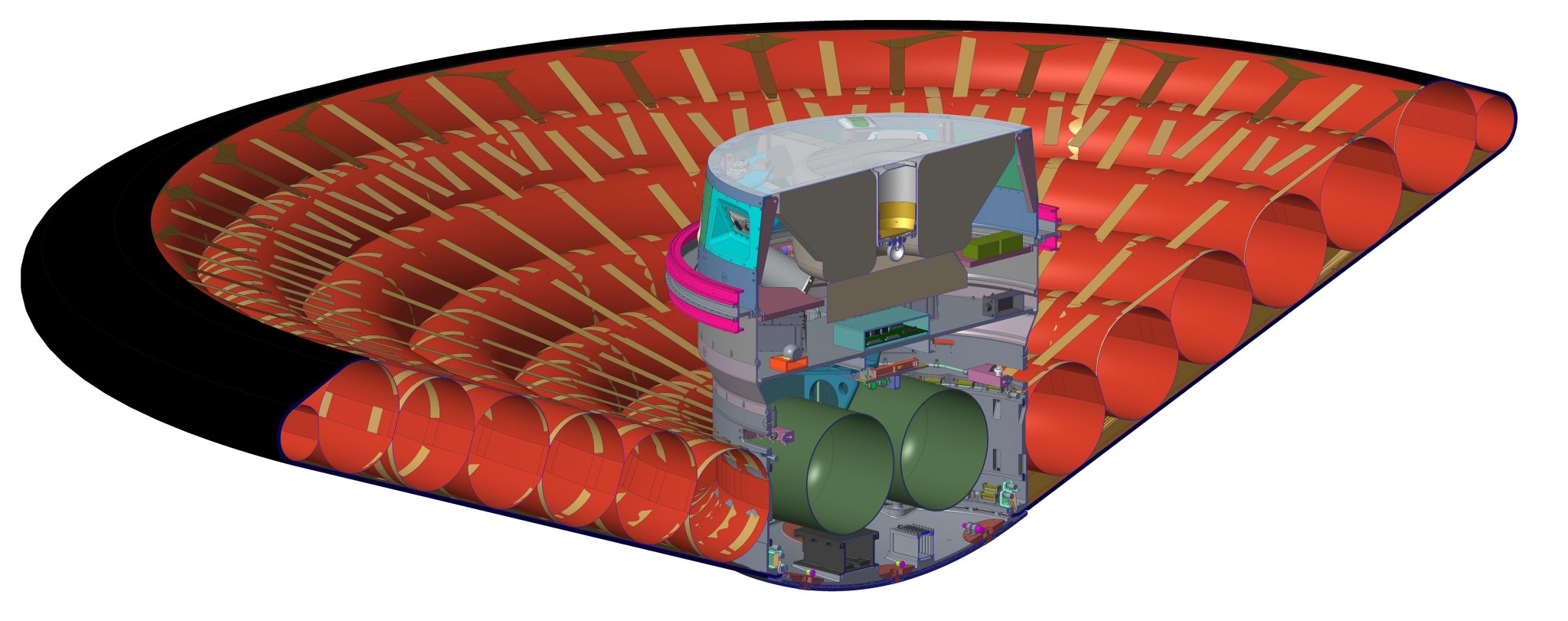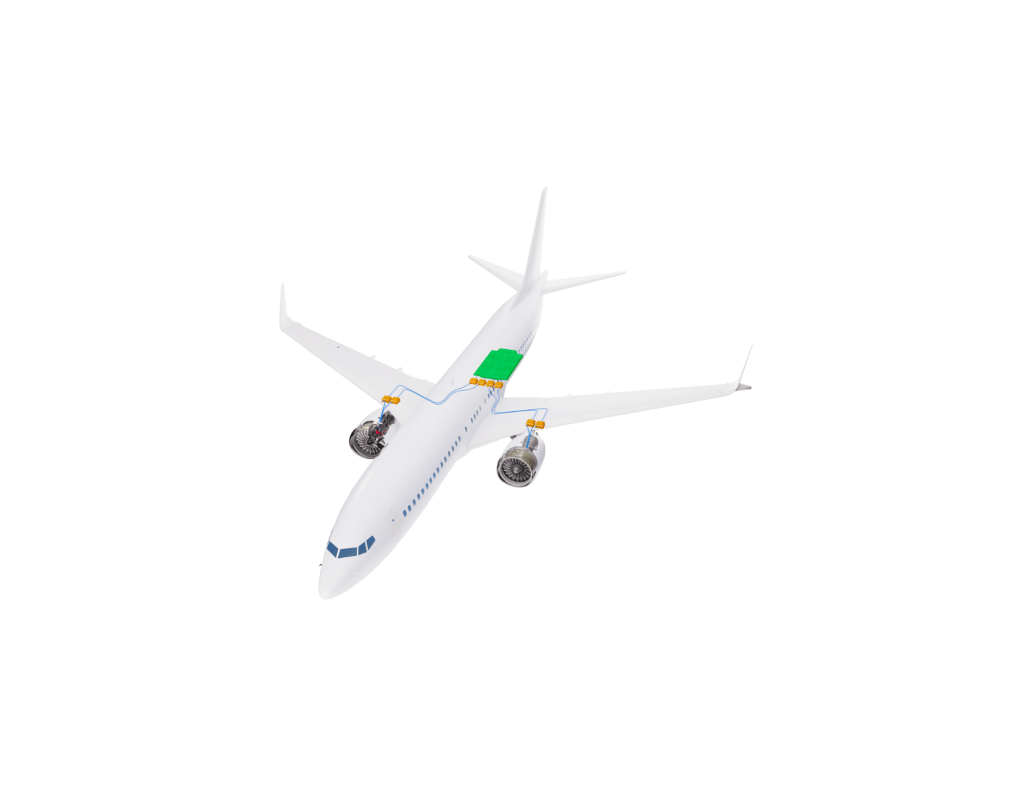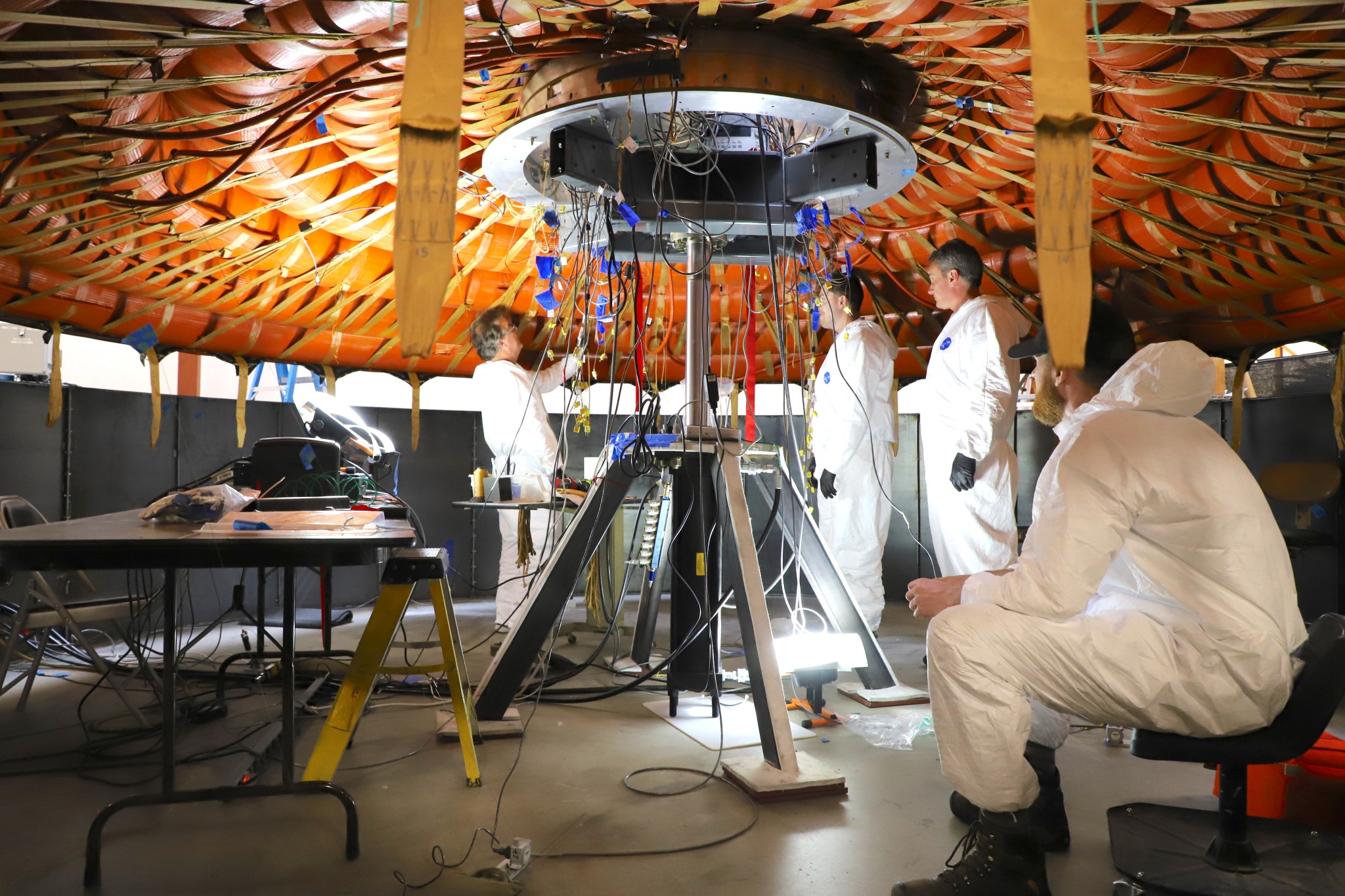Update: As of March 30, 2022, the launch date for the JPSS-2 satellite is scheduled for September 2022.
An inflatable decelerator technology that could one day help humans land on Mars will fly on the same Atlas V rocket as the JPSS-2 satellite.
The Apollo lunar landers fired retro rockets to land humans on the Moon. The space shuttle relied on drag from the atmosphere to act like a brake during re-entry to Earth. But firing rockets requires hauling lots of fuel. And the Martian atmosphere, which is roughly 100 times thinner than our own, is too thin to produce enough drag to slow a spacecraft as easily as we can on Earth.
The 2,000-pound Curiosity Rover, which landed on Mars in 2012, is the biggest thing we’ve ever sent to the Red Planet, and close to the weight limit for existing deceleration technology.
“Right now, heat shields are rigid, and the maximum size is constrained by the size of the launch vehicle,” said Barry Bryant, project manager for the Low-Earth Orbit Flight Test of an Inflatable Decelerator, or LOFTID, at NASA’s Langley Research Center.
Delivering humans and their cargo to Mars will require much bigger payloads. Humans need lots of food, water, air, insulation, radiation protection and life support systems – rovers don’t.
“To take humans to Mars, we have to deliver a small house,” said Neil Cheatwood, senior engineer for planetary entry, descent and landing at NASA’s Langley Research Center. “You need an aeroshell much larger than you can fit inside a rocket.”
But in order to one day deliver that payload, engineers need to first demonstrate that the decelerator can survive the incredible heat and speeds of re-entry.
Enter LOFTID, a partnership between NASA’s Space Technology Mission Directorate and United Launch Alliance. It’s the latest step in a kind of technology known as Hypersonic Inflatable Aerodynamic Decelerator.
Credits: NASA
LOFTID will fly as a rideshare with the JPSS-2 polar-orbiting satellite in March 2022.
This flight will not carry a payload, but will test the vehicle’s ability to survive re-entry to Earth from space, produce the desired atmospheric drag and, Cheatwood said, “exhibit adequate aerodynamic stability to keep us pointed forward and not just come in tumbling.”
JPSS-2, to be renamed NOAA-21 after entering orbit, is a continuation of the Joint Polar Satellite System series of satellites, which provide data that inform seven-day forecasts and extreme weather events. Instruments from the JPSS satellites also tell us about wildfires, volcanoes, atmospheric ozone, ice loss and ocean health.
“Our JPSS-2 mission is literally focused on the Earth,” said Greg Mandt, director of the JPSS Program. “To think that we could share some of the excess capacity from our Atlas launch vehicle to test technologies that will support human exploration of Mars is a tremendous bonus.”

LOFTID will get folded and packed down tight during launch and then inflated just before re-entry. The inflatable structure is made of synthetic fibers, braided into tubes that are 15 times stronger than steel. The tubes are coiled so that when they’re inflated, they form the shape of a blunt cone. The thermal protection system that covers the inflatable structure is designed to survive searing entry temperatures and able to withstand 2,900 degrees Fahrenheit. The aeroshell built for the flight demonstration will reach 20 feet in diameter when deployed, nearly five times its size when stowed and the length of a mini school bus. Engineers believe it can be scaled up to accommodate large payloads.
“If you look at fuel efficient cars, they’re streamlined to minimize drag,” said Cheatwood, who is also the principal investigator for LOFTID. “Part of their efficiency is coming from low mass, and part is the aerodynamic shape. We’re looking for the opposite. We want to maximize the drag.”
After the JPSS-2 satellite is delivered to its orbit, the Centaur, the rocket’s second stage, will do a deorbit maneuver to a lower orbit. The Centaur will point the LOFTID vehicle toward its desired atmospheric entry point and allow the aeroshell to inflate. The Centaur then will spin the vehicle up to give it gyroscopic stability, eject it, and then perform a divert maneuver. As LOFTID re-enters the Earth’s atmosphere, it will slow from hypersonic to subsonic speeds, deploy a parachute and then land, likely in the Pacific Ocean near Hawaii. It is expected to reach speeds as fast as 5 miles per second.
Getting humans to the surface of Mars is just one of many possible applications for LOFTID. United Launch Alliance is interested in its potential to recover booster engines after launch. The technology could also be used to haul equipment back from the International Space Station or to return materials like fiber optic cables manufactured in space.
“ULA is excited to work with NOAA and NASA to demonstrate this critical technology,” said Michael Holguin, senior program manager for the LOFTID mission for United Launch Alliance. “Not only for recovery of engines for the Vulcan Centaur program engine reuse, but also for the entire space program, re-entry of space vehicles to Earth as well as other planetary bodies.”
By Jenny Marder
NASA’s Goddard Space Flight Center, Greenbelt, Md.

























